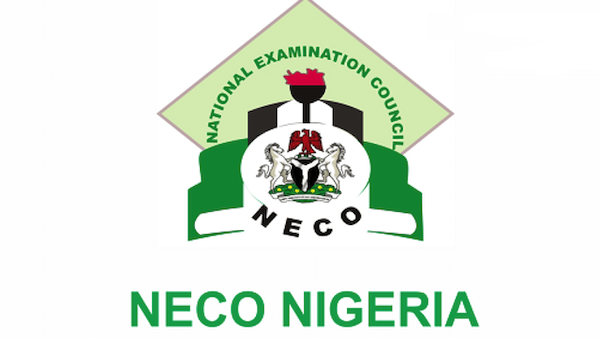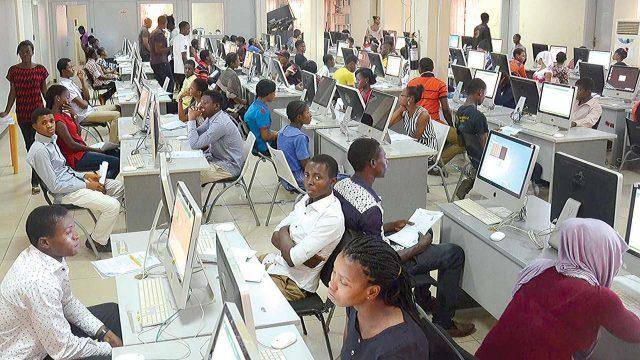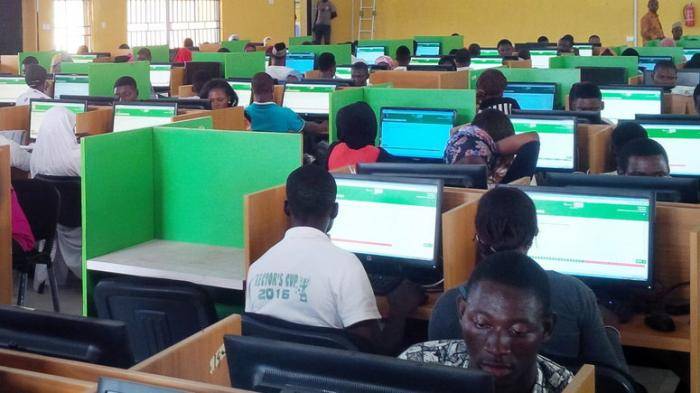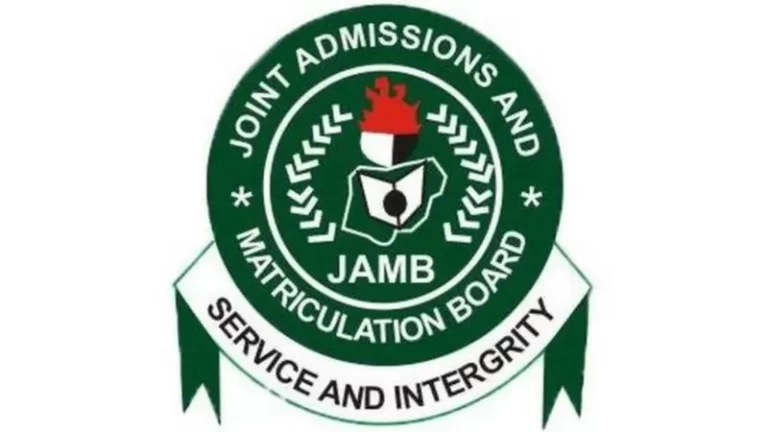Neco

Geography-Obj
1-10: AAEBDBDCDD
11-20: ECBBAAAEDA
21-30: AECDACDBAC
31-40: BADDADDDEC
41-50: BCADDEDEAA
51-60: EACDBDACBE
GEOGRAPHY-ANSWERS!
Clear Version!!!!!
(1)


(1)

(2a)

(2b)
(i) Solstice occurs twice a year while equinox occurs twice a year.
(ii) Solstice is when the sun reaches its highest point in the sky while equinox is when the day and night are of equal length.
(2c)
(ii) They are imaginary circles that run parallel to the equator.
(ii) They are used to measure distance north or south of the equator.
(iii) They are measured in degrees, minutes, and seconds.
(iv) The equator is the largest line of latitude, while the poles are the smallest.
(5ai)
Weathering refers to the process of breaking down rocks, minerals, and other substances on the Earth’s surface into smaller pieces or altering their composition through physical or chemical means.
(5aii)
(PICK ANY TWO)
(i) Temperature
(ii) Moisture
(iii) Oxygen
(iv) Carbon dioxide
(v) Acid rain
(5b)
(i) Oxidation – The chemical reaction between oxygen and minerals causes them to break down into smaller pieces or change their composition.
(ii) Hydration – Water molecules in the atmosphere combine with minerals, resulting in the formation of new minerals, or altering their existing composition.
(iii) Carbonation – Carbon dioxide in the atmosphere reacts with certain minerals, causing them to dissolve or break down into smaller pieces.
(7ai)
Renewable resources: These are natural resources that can be replenished or regenerated within a human lifespan or at a faster rate than they are consumed. They are considered sustainable as they can be used without depleting the resource itself. Examples of renewable resources include solar energy, water, wind power and plant life.
(7aii)
Non-renewable resources: These are resources that come from a finite source that cannot be replenished in a short period of time. Examples include fossil fuels (such as oil and natural gas), uranium, and gemstones.
(7b)
(PICK ANY TWO)
(i) Reduced air pollution and water contamination resulting from the extraction and burning of non-renewable resources.
(ii) Increased energy security since reliance on renewable energy sources reduces the vulnerability to price unpredictability associated with non-renewable resources.
(iii) Increased economic development and job creation since renewable energy requires significant investments in technologies, engineering, construction and operations.
(iv) Reduced water use since non-renewable resources usually require more water for extraction and utilization.
(v) Reduced land degradation due to the extraction of non-renewable resources, such as mining and drilling.
(vi) Reduced greenhouse gas emissions since renewable energy does not typically produce as much carbon dioxide (CO2) as burning fossil fuels.
(8a)
(PICK ANY FOUR)
(i) Navigation and mapping: GPS enables accurate positioning on maps, allowing individuals to find their way and plan routes.
(ii) Surveying and mapping: GPS assists in surveying and mapping operations such as measuring distances, angles, and slopes.
(iii) Vehicle Tracking: GPS can be used to track objects or vehicles in real-time, allowing for efficient fleet management and improved security.
(iv) Disaster Management: GPS plays an important role in early warning systems for natural disasters like floods, hurricanes, and earthquakes.
(v) Goods Tracking: GPS is used to track the movement of goods to ensure they reach their destination safely.
(vi) Agriculture: GPS can be used to facilitate precision farming by providing vital information about local soil, terrain, and climate conditions.
(8b)
(PICK ANY TWO)
(i) Data Acquisition: Both GIS and Remote Sensing systems are used to acquire data which is then used for various applications.
(ii) Spatial Analysis: GIS uses data collected by remote sensing systems to perform spatial analysis, such as analysis of land use or population density.
(iii) Creation of Maps: GIS and Remote Sensing are used together to create maps with geographical and other features.
(iv) Updating of Maps: Remote sensing image data is used to update existing maps and make new maps.
(v) Decision Making: GIS is used to visualize data collected from remote sensing images to make informed decisions.
(8c)
(PICK ANY FOUR)
(i) Lack of Infrastructure: There is a lack of adequate infrastructure for the proper implementation of GIS in Nigeria, such as access to quality Geographic Information data and reliable internet connections.
(ii) Cost Issues: Developing and implementing GIS projects in Nigeria can often be expensive due to the cost of hardware, software, training, and personnel required.
(iii) Limited Resources: There is a lack of skilled personnel and resources to implement GIS projects in Nigeria.
(iv) Data Issues: There is a shortage of quality geographical data available for GIS projects, or the data is often outdated.
(v) Security Risks: If GIS is not properly implemented, there is a risk of unauthorized access to sensitive data.
(vi) Technological Limitations: There may be technological limitations that prevent the full utilization of GIS or hinder its effectiveness.
Completed!.
RECOMMENDED TOPICS
- JAMB 2025 UTME/DE registration document – step-by-step on how to apply for UTME and DE

- JAMB postpones 2025 UTME Registration to February 3rd

- JAMB Officially Announces 2025 UTME Registration, Exam, Mock Dates, Cost and Important Details

- The official reading novel for Jamb 2025 is Lekki Headmaster

- Subjects for Computer Science in JAMB for Guaranteed Success


